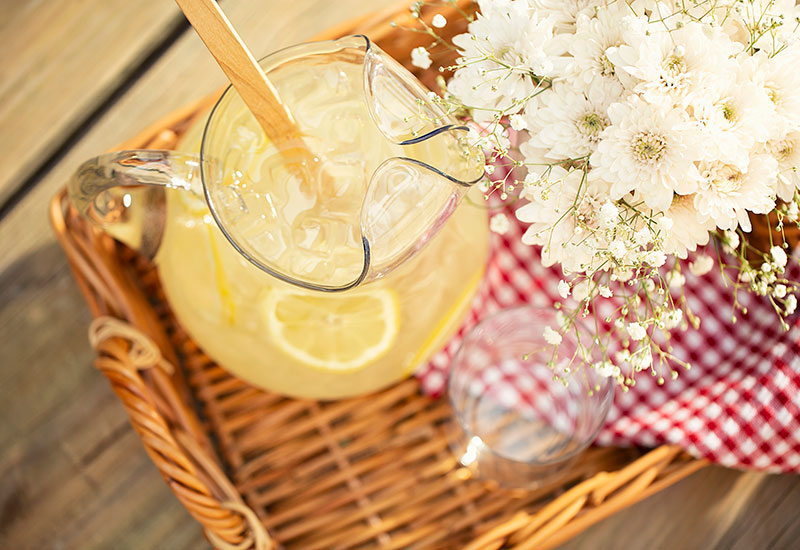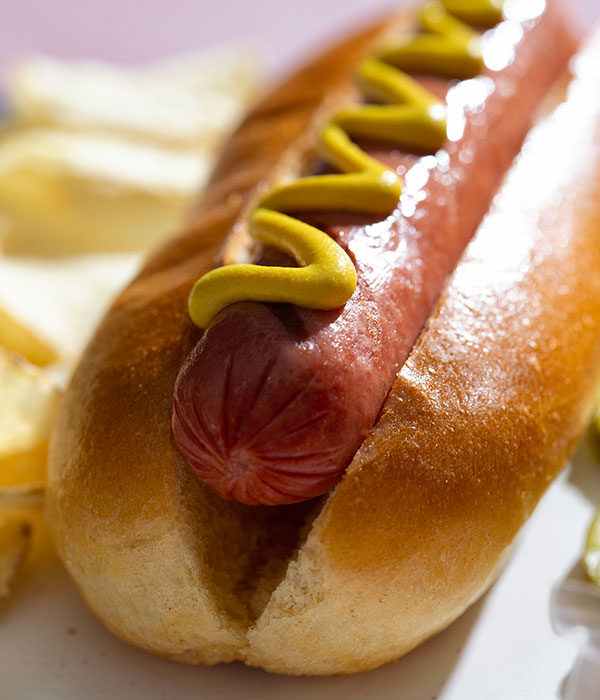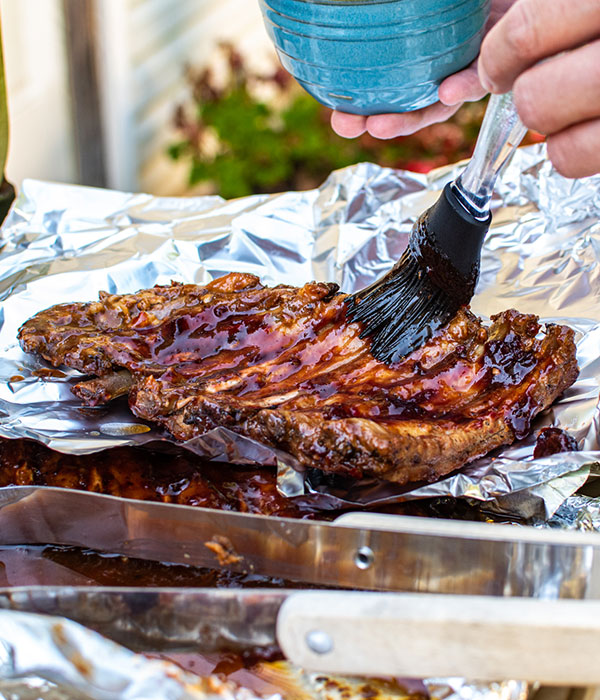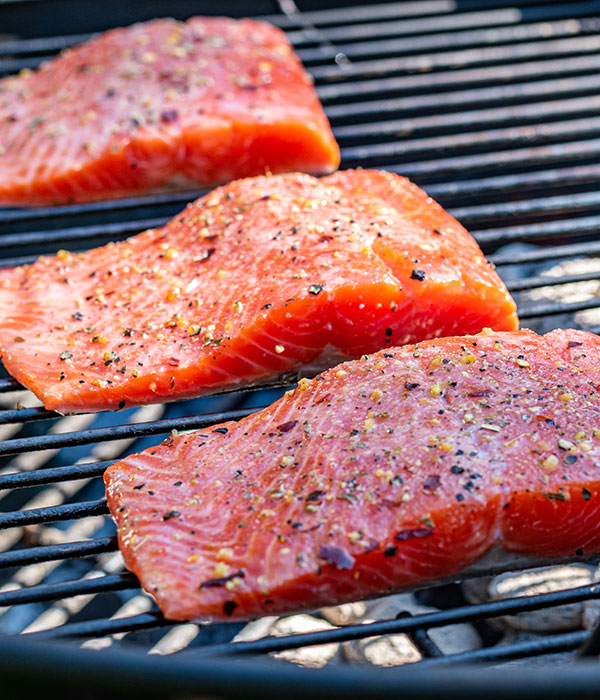5 Tips for Smart and Safe Summer Cooking

The following information was provided courtesy of local cookbook author and chef, Carla Snyder.
As cold, rainy weather ends, spring and early summer signal the start of warm weather fun such as camping, boating, picnicking and casual cookouts in the backyard. Most of these activities involve preparing at least one meal on the go, so now is a good time to talk about the best ways to store, handle and serve food safely in the great outdoors.
The most important thing to keep in mind about food safety is that most bacteria do not grow rapidly at temperatures below 40°F or above 140°F. So, food that sits in the range between 40°F and 140° F after two hours (or one hour if the outdoor temperature is over 90°F) is in the danger zone for bacterial growth and should be discarded.
When taking food outside the house, food poisoning is a real risk. Long-term removal of food from its usual environments – the refrigerator, freezer, pantry or a clean kitchen – can increase the risk of bacterial contamination, so planning is key. To protect yourself, your family and friends from foodborne illness during warm-weather months, safe food handling is critical.
Read on for simple guidelines for preparing, transporting and serving meals safely this summer!
1. Plan a Realistic Menu and Keep it Simple
- Whether cooking on the deck or at a campsite, planning a menu will help you determine what food to bring and how much of each item you will need, thereby avoiding spoilage from overpacking or a lack of space to keep food cool. In other words, try to avoid leftovers.
- When possible, serve ready-made foods such as hummus, salsas, cut fruit and vegetables, chips and cool salads that can be made and assembled ahead of time. Heinen’s has a wide assortment of these items, ready to go whenever you are. Check out the Daily Bites section of Heinen’s Prepared Food Department for ready-made, picnic friendly items sure to please kids and adults alike.
- Avoid foods such as deviled eggs, macaroni salad and potato salad for picnics because mayonnaise-based dishes are more prone to bacterial development. Focus instead on green salads and vinaigrette-based cold pasta and potato salads.
- Determine how you will be cooking the food (over an open fire or with pots and pans on a cooktop) and bring the appropriate tools, such as heat-proof mitts, spatulas, etc. Be sure to bring a variety of cooking utensils as they may become contaminated by raw food and need to be discarded or set aside. Plastic Ziploc bags, plastic wrap, foil and lots of paper towels will help keep things tidy.
- Try not to cook more than one thing, that way you have more control over cross contamination. Or better yet, bring pre-cooked items from Heinen’s Prepared Foods and Meat Departments, such as fried chicken, pulled pork, ribs or hot dogs and kielbasa that can be eaten chilled or gently warmed up.
- Pack or serve non-perishable foods such as nuts, dried fruit, chips, pretzels, non-dairy dips, beef jerky, individually packaged fruit bars, PB&J sandwiches, fresh fruit (though perishable, it will last hours without refrigeration) and cookies, brownies, cakes and pies from Heinen’s Bakery.

2. Pack and Transport Cold and Hot Food Safely
Use a high-quality cooler with thick insulation, a tight-fitting lid and wheels for easy transport.
Cold Food
- Cold, perishable food should be kept in the cooler at 40°F or below until serving time. Freeze plastic bottles of water and use them along with dry ice packs and ice in the cooler to keep food cold. As a bonus, you can drink the bottled water when it thaws.
- Layer flat ice packs between food containers when packing a cooler and make sure that items go directly from fridge to cooler.
- Cold food should not sit out for longer than 2 hours, or 1 hour if the outdoor temperature is above 90°F. If it does — throw it away.
- Pack beverages in a separate container, as they are accessed more frequently.
- To extend the time that cold food can be out, set them in individual serving dishes, shallow containers or deep pans filled with ice. Drain off the water as the ice melts and replace the ice frequently.
- Pack raw food separately from other foods to avoid contamination.
Hot Food
- Hot food should be kept at or above 140°F.
- Heat food, then wrap it well and place it in an insulated container with microwaveable hot packs between each item until you’re ready to serve.
- Just as with cold food, hot foods should not sit out for more than 2 hours. If food is left out longer, throw it away to be on the safe side.
- Hot food can be kept hot on a grill if you bank the coals to one side or turn the gas off on one side of the grill. Keep the foil-wrapped food on the cooler side. Monitor closely as it may continue to cook.

3. Quick Tips for Picnic Site Preparation
- Plan for outdoor hand washing without running water. Keep antibacterial wipes handy as well as a jug of water, soap and paper towels for rinsing off cooking utensils.
- Bring plenty of disposable garbage bags, eating utensils, paper plates, cups, napkins and a cloth for picnic tables or the ground.
- Bring extra Ziploc bags, plastic wrap and foil to wrap dirty utensils and package non-perishable leftovers.
- Look for a spot in the shade and park the coolers there to keep them cool.
- Use mesh food covers to keep insects away from your food while it sits out.
4. Follow Safe Grilling Practices
- Marinate safely. Always in the refrigerator and never on the countertop.
- Defrost meat, poultry and seafood safely. Always in the refrigerator and never on the countertop.
- Be sure to preheat the grill for optimum, consistent cooking, and so that all food on the grill cooks at the same rate.
- Cook meats thoroughly and always use a thermometer to make sure it’s at the right temp.
- Keep “ready” food hot by moving it to a cooler part of the grill where it will stay hot but not overcook. This will allow you to serve all hot food at the same time.
- Use a clean platter and spatula when transferring cooked meat off of the grill.

5. Prevent Cross Contamination When Cooking and Serving
- Don’t reuse platters or utensils after they touch uncooked food.
- Wash hands frequently when handling food.
- Separate utensils for different food types and mark them according to their food groups. For example, place red labels on the knives and chopping boards used for meat and green labels for uncooked salads and desserts.
Camping, hiking and outdoor entertaining are wonderful ways to enjoy nature in a more healthful way. Following these few tips will ensure that friends and family enjoy not only a beautiful day, but delicious, healthy and safe outdoor meals. Have a great summer!


